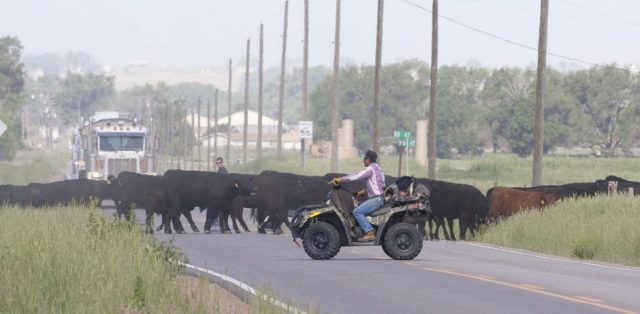EVANSVILLE, Ind., April 21 (UPI) — American livestock producers will receive the lion’s share of the $19 billion federal Coronavirus Food Assistance Program, with $5.1 billion earmarked for American cattle producers.
But with cattle industry losses expected to surpass $13.6 billion, according to new research from Oklahoma State University, industry leaders fear the aid will not be enough to save struggling ranchers.
“The bottom line is there will be guys in cow-calf production that at this point probably will not be able to cover their production costs,” said Derrell Peel, a professor of agribusiness and an Oklahoma State University Extension livestock marketing specialist, who lead the study.
“There are some producers that will not survive this,” Peel said.
Falling consumer demand for meat from Americans staying home to slow the spread of the coronavirus is at the heart of the issue.
The demand for meat initially surged in early March, when governors started to close restaurants and schools and issued the first stay-at-home orders. Consumers flooded supermarkets and stockpiled staples like meat, bread and eggs.
But that initial demand fell dramatically in the final weeks of March. American consumers had stocked up, and nationwide restaurant closures wiped out 40 percent or more of the market for beef.
Live cattle prices have fallen some 30 percent since January, according to the American Farm Bureau Federation, to about 85 cents a pound from $1.20.
Now, ranchers face yet another complication — packing plants have been closing because workers contracted the coronavirus.
JBS, an international meat processing company, announced Monday it was closing its pork processing plant in Worthington, Minn. It is the third American plant the company has shuttered amid the pandemic. The other two were beef facilities.
Smithfield Foods closed its pork processing plant in Sioux Falls, S.D., last week. Meanwhile, National Beef Packing has closed its plant in Tama, Iowa, and Cargill closed a plant in Hazleton, Pa.
“We’ve seen more packing plants shut down or scale back production because of sick workers,” said Colin Woodall, CEO of the Denver-based National Cattlemen’s Beef Association. “Now, there’s a backup of cattle in the system.”
That backup means some producers are struggling to sell cattle.
“Producers have adjusted as much as they can to buy time,” said Jim Petrik, a South Dakota rancher who raises cattle and hogs. “You can put cattle out to pasture to feed on grass, and reduce the energy in their diets so they grow slower. But at some point, they have to be harvested.”
Petrik added that the coronavirus aid will be welcomed by ranchers, but that it won’t make up for all the losses.
Details of how the program will be implemented are scant, but according to U.S. Sen. John Hoeven, R-N.D., who is chairman of the Senate Agriculture Committee, ranchers might be compensated for 85 percent of their price loss between Jan. 1 and April 15.
They also might be able to claim 30 percent of their expected losses over the next six months.
Payments to producers will be capped at $125,000 per commodity, with an overall limit of $250,000 per individual or entity.
The payments are expected to begin arriving in late May or early June, Hoeven said.
“We’re grateful, don’t get me wrong,” Petrik said. “But it’s not like having our markets back. This year might be the worst we’ve had financially.”

COMMENTS
Please let us know if you're having issues with commenting.